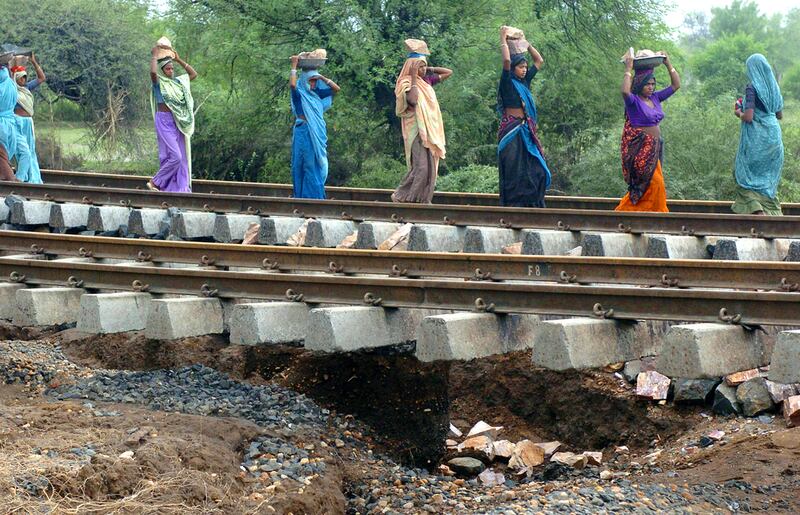This month, as the monsoon rains poured down on a busy route between Mumbai and Goa, a bridge caved in, sending buses and cars plunging into the river below to be swept away by the fiercely strong currents. This caused the death of what is being estimated at more than 40 people.
While India is ploughing ahead with economic reforms and luring global brands to the country, this served as a reminder of India’s creaking infrastructure. Despite efforts being under way to upgrade its basic facilities, business leaders say that the country’s poor infrastructure is hampering India’s economic growth and the business and investment environment, and desperately needs to be overhauled.
“Years and years of underinvestment have left our country with a bad need for infrastructure across various fields like roads, railways, ports, airports, telecommunications and electricity,” says Pradeep Gupta, the executive director of Jagson International in New Delhi. “Businesses in India cite infrastructure as the single biggest hurdle. These kinds of infrastructure challenges are affecting economic growth here.”
India has a population of more than 1.2 billion, which is adding to the strain and demands on the country’s infrastructure and to the urgency to address the problems, experts say.
Steps are being taken by Narendra Modi’s government, with plans for high-speed trains, smart cities and new airport infrastructure. But more needs to be done, and at a faster pace, experts say.
“The government is working towards improving the country’s infrastructure by increasing road and rail connectivity,” says Dharmesh Jain, the chairman and managing director of Nirmal Lifestyle, a real estate developer in Mumbai. “However, there is a need for more and private-public partnerships to aid big projects.The ministry needs to focus on completion of current projects.”
He says that issues including transparency and corruption need to be addressed to help facilitate the development of better infrastructure in India.
Anil Bhaskaran, the founder, chief architect and urban planner at Idea Centre Architects, explains that infrastructure development in India “lagged behind” the “spurt in the economy” following economic liberalisation, which started in 1991.
“Of late, there has been a tremendous focus on infrastructure,” he says. “We have realised that unless we have adequate infrastructure, even investment flows into the country will be affected because those who comes to India will definitely require nice roads and good telephone facilities.”
China is well ahead of India when it comes to its infrastructure.
Mr Bhaskaran says that India “has to go a long way to reach the level of China’s infrastructure”, but that India faces issues surrounding securing land and winning over segments of the population to go ahead with specific projects because of its democratic system.
The ratings agency S&P this month published a report titled “The Missing Piece In India’s Economic Growth Story: Robust Infrastructure”.
It highlights that improvement in economic and operating conditions in India are highly dependent on its infrastructure, which it says “remains inadequate”.
Poor infrastructure is one of “the biggest hurdles” facing Mr Modi’s flagship Make in India campaign, which aims to transform the country into a global manufacturing hub.
“Besides, robust infrastructure development can provide a boost to many sectors, including steel, cement, auto, and real estate,” wrote S&P.
It wrote that India’s power “seems to be turning a corner in the generation and transmission sector” but transport iss still constrained.
“India’s transport infrastructure sector could significantly benefit from a stable regulatory environment that has an independent regulator, appropriate dispute-resolution mechanisms and supportive, comprehensive policies,” says Abhishek Dangra, a credit analyst at S&P. “These are the same factors that underpin the improvement in power generation and transmission.”
Even if the government leads the way on spending on transportation infrastructure, carrying out such projects is likely to remain a challenge in many cases.
“The government is scaling up spending, but its heavy debt burden could derail its ambitions to improve public infrastructure,” wrote S&P. “It will thus need funds from private-sector investments, unlike China, which has largely state-funded infrastructure.”
Because of India’s sizeable infrastructure needs, there are significant opportunities for companies in the sector, including construction, transport and technology firms. This has attracted a number of foreign companies such as Thales, ABB, and Siemens, which consider India to be an important market for generating business.
“India is a vast country and there is still a large chunk of area that is not developed and well-connected to the metros and tier one cities,” says Mr Jain. “Hence there is definitely scope for infrastructure development. Foreign investment could help expedite the process and get inflow of funds for the government to execute projects.”
But some developers say that many companies are shying away from infrastructure projects because of various challenges.
“There are numerous challenges to infrastructure development – funding constraints, land acquisition issues, delays related to identification and award of projects, securing approvals, and shortage of skilled manpower are some major reasons currently causing delays,” says Ravi Gurav, a member of the Maharashtra Chamber of Housing Industry and the vice president of marketing at Dheeraj Realty.
“Land acquisition has been the major roadblock for the development of infrastructure. Several projects have been stalled or delayed because of land acquisition issues. There are multiple reasons that lead to delays in land acquisition. One primary reason has been resistance from farmers or local communities whose land is being acquired.”
Infrastructure in India is still not considered a preferred business opportunity because of policy paralysis and the lack of innovative technologies, says Ajit Karandikar, the director at Vastav Developers.
“The government should ideally play an active role in partnering with the infrastructure companies to develop a better infrastructure industry,” he said.
Pradeep Misra, the chairman and managing director at Rudrabhishek Enterprises, an urban planning and architecture firm, agrees that companies in India’s infrastructure sector have been negatively impacted.
“The order inflows for large infrastructure firms have declined over the past one to two years,” says Mr Misra. “The appetite of infrastructure developers for new projects has significantly reduced. Banks are also being cautious in lending to infrastructure sectors, where exposure limits have already been reached.”
Foreign investment into India’s infrastructure is set to play an even bigger role.
Mr Modi’s visit to the UAE a year ago resulted in the announcement of a US$75 billion fund to support investment in Indian infrastructure. This is to support the development of India’s railways, roads, airports, and ports.
“I understand that the scope of foreign investors will increase in infrastructure sectors,” says Mr Misra. “The policy makers have shown explicit interest in attracting foreign investment. There is emphasis on a public private partnership model. We have seen that lot of foreign investors have already started gearing up for participating in the smart cities program.”
business@thenational.ae





